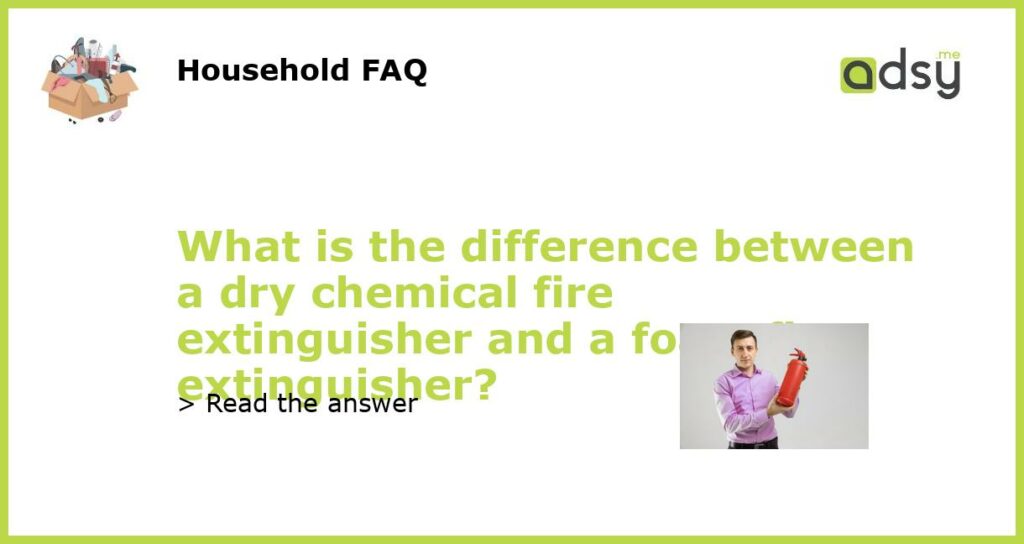Dry Chemical Fire Extinguisher vs Foam Fire Extinguisher: Understanding the Difference
Fire extinguishers are essential safety tools to have in any building or space. They come in different types, each designed to extinguish specific types of fire. Two common types are the dry chemical fire extinguisher and foam fire extinguisher. Both work by suppressing the fire, but their mechanisms and uses differ significantly. In this article, we’ll be discussing the differences between the two types, how they work, and what types of fires they can effectively extinguish.
Understanding Dry Chemical Fire Extinguishers
A dry chemical fire extinguisher contains a dry chemical powder that cuts off the oxygen supply and extinguishes the fire. It is suitable for Class A, B, and C fires. Class A fires involve ordinary combustibles such as wood, paper, and fabric. Class B fires involve flammable liquids and gases such as gasoline, propane, and oil. Class C fires are electrical fires, such as faulty electrical equipment and appliances. The dry chemical powder in the extinguisher coats the fuel and prevents the fire from reigniting.
Understanding Foam Fire Extinguishers
Foam fire extinguishers work by cooling and smothering the fire. They contain an aqueous foam solution that is suitable for Class A and B fires. The foam mixed with water creates a blanket that covers the fuel and cuts off its oxygen supply, thus extinguishing the fire. Foam extinguishers are ideal for fires involving flammable liquids such as gasoline and oil, and fires involving solid materials such as wood and paper.
Differences between Dry Chemical and Foam Fire Extinguishers
The primary difference between dry chemical and foam extinguishers is their mechanism of action and the type of fire they are designed to extinguish. Dry chemical extinguishers use a powder that smothers the fire by cutting off the oxygen supply. Foam extinguishers work by cooling and smothering the flames with their foam mixture. Dry chemical extinguishers are suitable for Class A, B, and C fires, while foam extinguishers are best for Class A and B fires.
Choosing the Right Extinguisher
To choose the right fire extinguisher, you need to know the type of fire that the extinguisher is suitable for. For example, if you have a garage with gasoline and oil containers, you’ll need a foam extinguisher. If you have a computer room with electrical equipment, you’ll need a dry chemical extinguisher. It’s also important to have the right size and number of extinguishers in your building to meet safety regulations.
In summary, both dry chemical and foam fire extinguishers are useful tools for extinguishing fires but are designed to work differently and for specific types of fires. By understanding the differences between the two types, you can ensure that you have the correct type of extinguisher for your building and reduce the risk of damage from fires.






